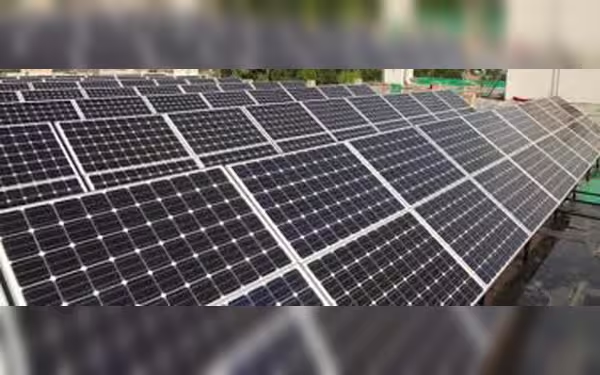Thursday, November 7, 2024 05:46 AM
Chinese Solar Panels Transform Pakistan's Energy Landscape
- Chinese solar panels add 10,450 MW to national grid.
- 30% of electricity consumption now from solar power.
- Installed solar capacity projected to reach 9.53 GW by 2029.
 Image Credits: dailytimes_pk
Image Credits: dailytimes_pkChinese solar panels significantly boost Pakistan's energy supply, easing grid pressure and promoting renewable energy adoption.
In recent months, Pakistan has witnessed a significant transformation in its energy landscape, primarily due to the influx of affordable solar panels from China. These solar modules, which have contributed a remarkable 10,450 megawatts (MW) to the national grid in the first half of 2024, have alleviated some of the pressure on the country’s electricity supply system. With millions of citizens grappling with frequent power outages, the shift towards renewable energy, particularly solar power, has provided a much-needed respite.
According to officials from the Lahore Electric Supply Company (LESCO), the financial viability of Chinese solar panels has been a game-changer for Pakistan. In the first half of 2024 alone, the country imported inverters from China worth a staggering RMB 1.714 billion. Notably, in August, the value of inverter exports to Pakistan soared to 326 million yuan, marking an astonishing year-on-year increase of 429.04 percent. This surge in solar technology imports has allowed the national grid to function more efficiently, reducing the frequency of outages that have plagued the system for years.
As the pressure on the grid eases, the statistics tell a compelling story. In September, electricity generation on the grid fell by 6 percent year-on-year to 12.1 billion units, while August saw a 17 percent decline. This drop in generation marks the lowest output for September since 2018, highlighting the extent to which the grid's demand has been alleviated. The 12-month moving average monthly generation has also dipped below 10 billion units for the first time in 44 months, indicating a significant shift in energy consumption patterns.
Furthermore, a WAPDA official revealed that nearly 30 percent of electricity consumption in Pakistan is now sourced from solar power. If the trend of receiving affordable Chinese solar systems continues, the installed solar capacity is projected to grow from 1.41 gigawatts in 2024 to an impressive 9.53 gigawatts by 2029, reflecting a compound annual growth rate (CAGR) of 46.55 percent. This remarkable growth is largely attributed to the increasing adoption of Chinese solar photovoltaic (PV) systems, which are becoming more accessible and affordable for residential, commercial, and industrial sectors alike.
In addition to the economic benefits, rising environmental concerns are prompting a shift towards cleaner energy sources, such as solar power. The Pakistani government has recognized the importance of this transition and has launched several initiatives to bolster the solar energy sector. The Alternative Energy Development Board (AEDB) has set an ambitious target of generating 30 percent of the country’s power from renewable sources by 2030.
The arrival of affordable Chinese solar panels has not only eased the burden on Pakistan's national grid but has also paved the way for a more sustainable energy future. As the country continues to embrace renewable energy, it is essential for both the government and the private sector to collaborate and invest in this promising sector. The shift towards solar power is not just a necessity; it is an opportunity for Pakistan to enhance its energy security, reduce reliance on fossil fuels, and contribute to a cleaner environment for future generations.













